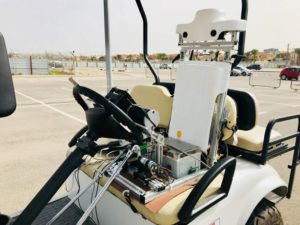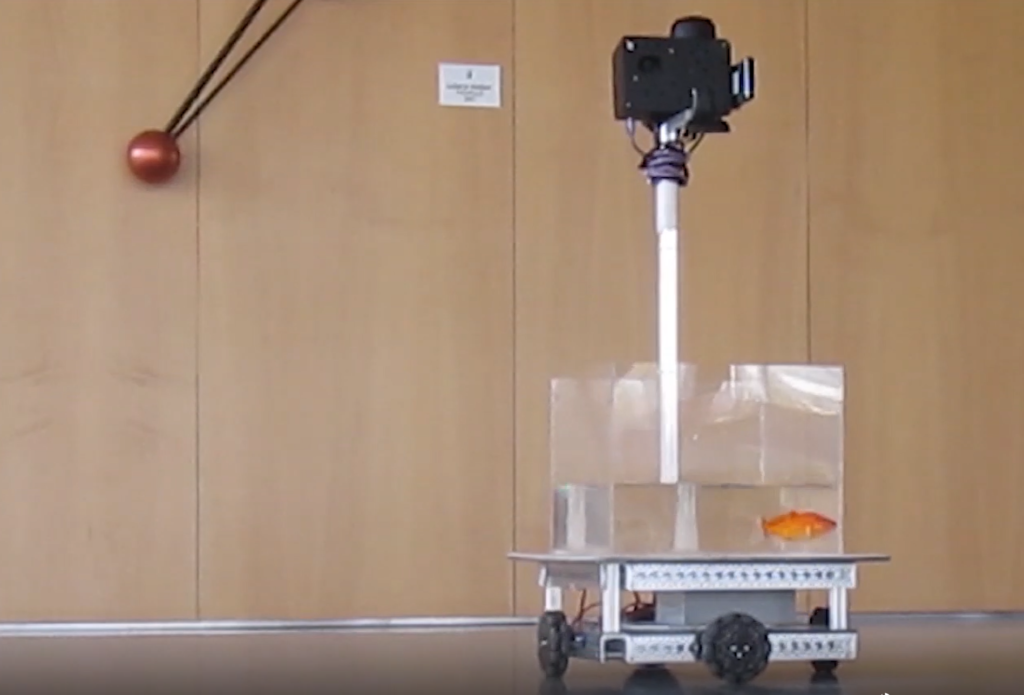
Robot, You Can Drive My Car
August 10, 2018
By Erin Biba, an Americans for Ben-Gurion University Fromson Fellow from the 2018 Murray Fromson Journalism Fellowship.
Popular Mechanics – Its face is made of a white plastic casing and two cameras. Its black “eyes” focus relentlessly forward, using algorithms and machine learning, rather than human reflexes and intuition, to spot objects in its path. Two struts pump the car’s pedals, while a metal arm—three robotic digits attached to the steering wheel—calmly transports human cargo to their destination.
This is IVO, your robot chauffeur.
IVO, short for Intelligent Vehicle Operator, is a different spin on the traditional autonomous car. Usually, self-driving concept cars show no one behind the wheel—if there’s even a wheel at all.
To ease the transition from the roads of today to the roads of tomorrow, researchers at Ben-Gurion University’s Laboratory for Autonomous Robotics are developing this suitcase-sized robot driver that can turn any car autonomous.
“Right now, you have millions of cars that are not autonomous,” says Oded Yechiel, BGU Ph.D. student and one of the electrical engineers developing the IVO. “This in-between phase is kind of complex and needs a solution—this kind of technology will maybe hasten the transition.”
When I visited Yechiel at his lab at BGU, he demonstrated how the robot functions by having it drive a golf cart around the University’s parking lot. The autonomous chauffeur was remarkably sensitive to objects in its way, navigating alternate paths to avoid collisions. Watching the robot handle this chaotic situation calmly, in comparison to a human, was remarkable.
Now Yechiel’s team is working on the second generation, upgrading the robot with better algorithms, more sophisticated motors and a “tighter” design. The latest version features four interior cameras, which allows IVO to understand its environment and see objects, vehicles and pedestrians around it.
With built-in adaptive learning, IVO can adjust and upgrade its driving tactics based on every new vehicle it drives, like when human drivers adjust to a new car’s subtle differences in acceleration and breaking. IVO can learn just as quickly.
Despite all advanced tech required to create a working robot chauffeur, the entire thing is surprisingly portable. To set up IVO, all you need to do is pop the 44-pound robot into the driver’s seat. Its two leg rods work the brake and gas pedals and an additional arm does the steering.
“We want the robot to be very compact. When you want to store it you keep it in the trunk, and when you want to use it you take it out, unfold it and install it in five minutes, then you’re ready to go,” Yechiel says.
While the robot can drive autonomously, you can also give IVO directions with a remote control, like a true backseat driver. With the smartphone app in hand, someone can give IVO instructions using just a few buttons. It accepts directions via GPS coordinates or maps, and can take the vehicle to a series of waypoints or a final destination.
The robot’s on-board battery lasts about five hours, but can be connected to as many batteries as can fit inside the vehicle to keep it running as long as needed. Ultimately, that means the robot is flexible and can adapt to different vehicles—whether that entails driving you down the road or, more likely, taking on a more industrial purpose.
Yechiel does believe that one day IVO could hit the open road, but until then his team is focusing on developing new technologies for the robot, like giving IVO the ability to hear. By adding acoustic technology, IVO could one day respond to horns, sirens or human voices.
“Maybe one day,” Yechiel says, “IVO will be able to tell bad jokes.”





